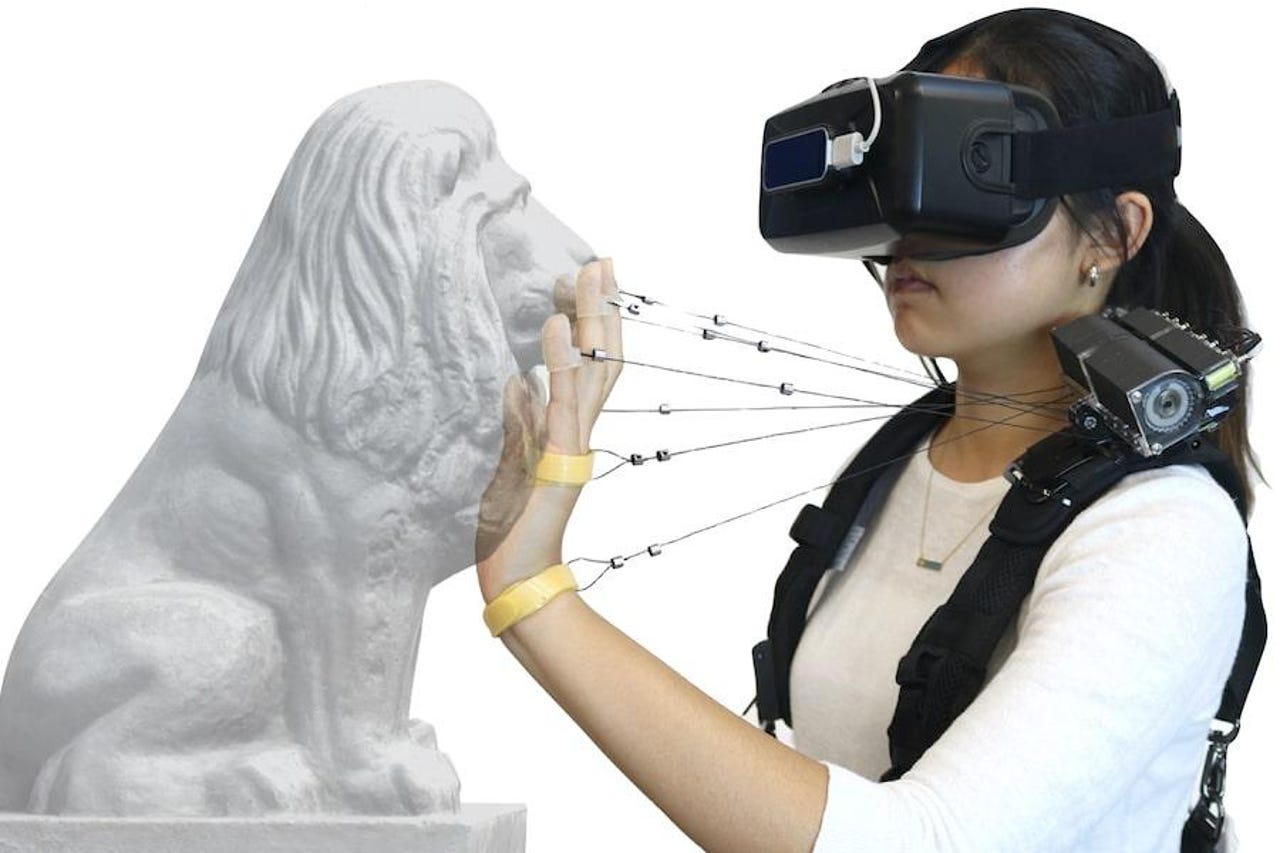Ready to "feel" solid walls in virtual reality?


Haptics have come a long way, but virtual reality remains primarily a visual and auditory medium. New technology points to more immersive solutions that simulate the feeling of hard objects, but it also suggests that virtual reality might, for the near future at least, be a cumbersome technology that's not easy to integrate into the lives of the average consumer.
The research comes out of Carnegie Mellon, a leading fount of breakthroughs in human-machine-interface technologies, which have applications in fields like robotics and immersive reality. The device in question uses multiple strings attached to a user's hand to simulate the feel of obstacles and heavy objects.
It's a novel application. The hard stop we feel when our fingers land on a wall or bang into a hard object is a familiar sensation that up until now hasn't been replicable in virtual reality. Instead developers have gotten by with substitutions, most commonly in the form of haptics that give a jolting vibration to warn a user they've gone plum through a wall.
The strings are capable of locking, forming a hard stop for the fingers. More nuanced applications include feeling the curvature of 3D objects or sensing resistance and give when nudging something that moves.
"Elements such as walls, furniture, and virtual characters are key to building immersive virtual worlds, and yet contemporary VR systems do little more than vibrate hand controllers," says Chris Harrison, assistant professor in CMU's Human-Computer Interaction Institute (HCII), who worked with a team of CMU researchers and students on the device.
The machine uses spring-loaded strings, which reduce weight, consume less battery power, and keep costs low. Co-authors Harrison, along with mechanical engineering and human-computer interaction student Cathy Fang, Robotics Institute engineer Matthew Dworman, and HCII doctoral student Yang Zhang, found the shoulder-mounted device was more realistic than other haptic techniques according to user feedback.
"I think the experience creates surprises, such as when you interact with a railing and can wrap your fingers around it," Fang said. "It's also fun to explore the feel of irregular objects, such as a statue."
Strings have been used by other researchers to create tactile feedback, but typically those solutions are power intensive and rely on motors to control the strings. That makes the resulting devices bulky and expensive.
"The downside to motors is they consume a lot of power," Fang said. "They also are heavy."
The CMU device, which uses spring-loaded retractors like the ones in key chains or ID badges, use minimal power, leading to a device that weighs less than 10 ounces and costs less than $50.
Still, a shoulder-mounted wearable may be a tall order for most at-home applications. Virtual reality already suffers from a gear-overload problem that's contributed to slower than expected market adoption and its near perpetual status as being "on the cusp" of breaking through and finding a sizable customer base.
That's not to say there won't be excellent uses for devices derived from the CMU team's research. Those include controls applications where a VR-enabled user is piloting a robot, for example. Fang also said the system would be a good match for virtual museums or virtual shopping, where feeling a piece of furniture, say, could add value to the experience.